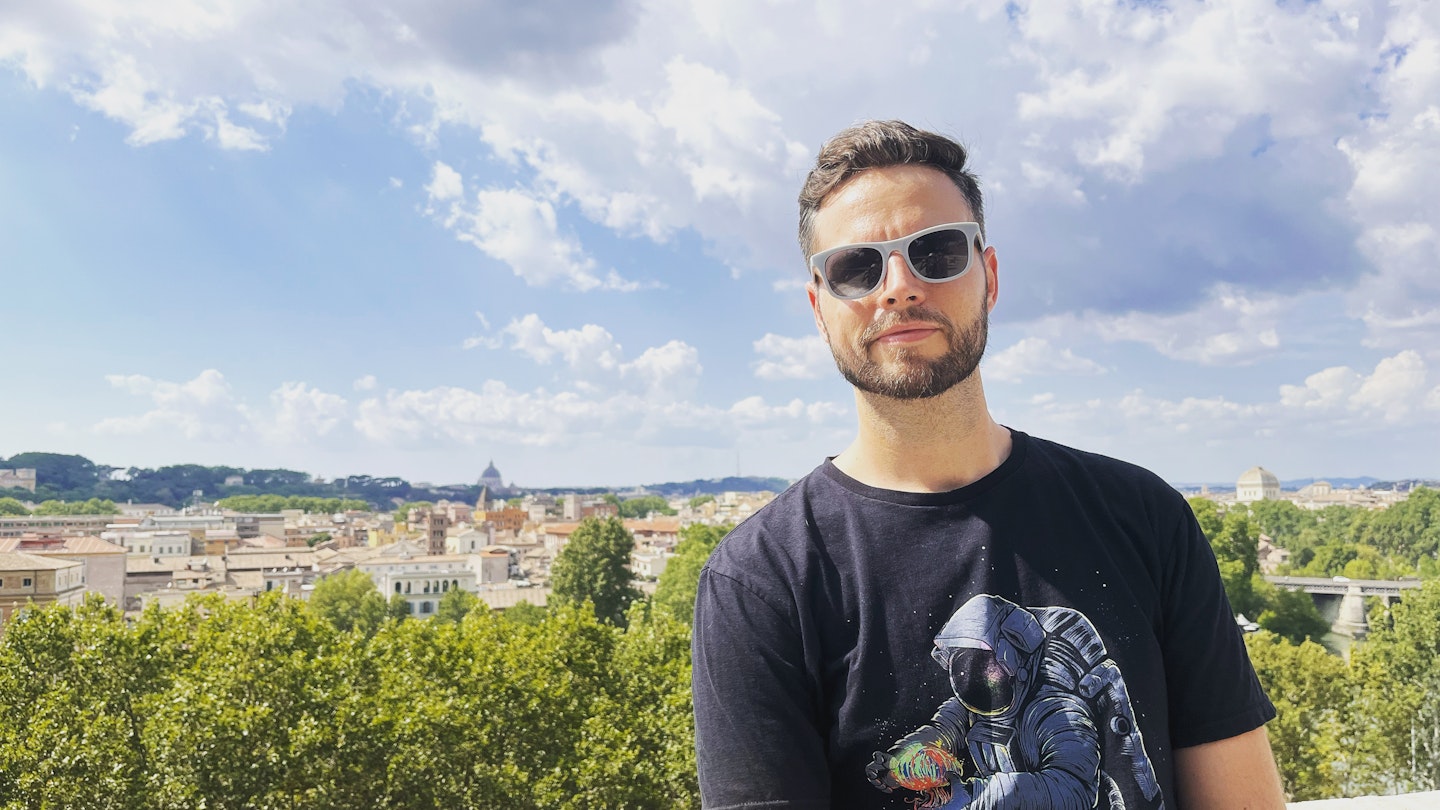Remote Work Adventure in Rome
If there’s any positive to come out of the last two years, it’s been the opportunity to escape a daily routine and work remotely.
As a writer, most of my work is already spent at my laptop. However, my wife, who works as a yoga instructor, needed to remain in New York City to maintain her clients. Not anymore. When everything moved online, so did yoga. Now, well into our third year of the pandemic, we are almost entirely remote, with the upside of living wherever we want. Our first stop on this around-the-world remote-work adventure: a month in Rome.
Rome is one of my favorite cities in the world. We all know the big players here: the Colosseum, the Vatican, the pasta. However, having an extended period of time in this capital city has provided incredible memories and off-the-beaten-path experiences.
Whether you have three days or thirty, it’s impossible to see everything. Here are some top tips, advice, and insights I’ve learned after weeks of winding my way through the cobblestone streets, chatting with locals, and living as the Romans do.

What part of the city did you stay in? What was the vibe?
We stayed in Banchi Vecchi, a small enclave just east of the River Tiber, a quick seven-minute walk to the lively Piazza Navona. The area is a delightful mix of locals and tourists, filled with boutique shops, wine bars, and acclaimed restaurants.
From Banchi Vecchi, you can easily access the Vatican and Castel Sant’Angelo via two famous bridges over the River Tiber. Moreover, while it’s close to everything, it’s not crowded—a big selling point for us when planning our stay. A few days in tourist-heavy areas can be exciting, but after 30 days, we desired a quieter vibe. The atmosphere is calm, local, artistic, with galleries present—particularly enjoying Ceramiche Nicola Fasano.
How did you get around?
Walking in Rome is spectacular. Living basically inside a museum, it makes sense to take the time to explore on foot instead of relying on taxis everywhere. Although it’s hot in August (when we visited), dressing comfortably in your summer clothes makes it manageable. Additionally, Rome boasts incredible streetside fountains called nasoni, providing fresh water that runs 24/7. I utilized them daily on my treks around the city to stay hydrated in the Roman sun!
Rome’s buses are extensive and efficient. Downloading an app like Citymapper makes it easy to navigate the public transport system. For instance, after visiting the Palazzo Massimo alle Terme, one of the four national museums of Rome, I was exhausted from walking and took a bus to return home in just 15 minutes.
Travel tip: Bus tickets can be found at any Tabacchi stores in every neighborhood. Remember to validate your bus ticket when boarding to avoid hefty fines!
Did you encounter any Covid-19 restrictions?
N95 masks are still required on all public transport. When I took day trips out of Rome on the weekends, train attendants were diligent in ensuring everyone followed the mask policy. My surgical mask was acceptable in NYC, but in Rome, the N95 is necessary, so plan accordingly. Fortunately, you can purchase suitable masks at every train station. Despite mask mandates, the city felt alive, vibrant, and eager to share its energy with the world again.

Best tips for living like a local in Rome
One of my favorite aspects of visiting any city is discovering little things that make me feel like a local instead of a tourist. One essential phrase to know for visiting Italy is “Quali sono le tue cose preferita da fare a Roma?” which translates to, “What are your favorite things to do in Rome?” We actively sought recommendations from local shop owners and restaurant staff. Therefore, by engaging with locals in their language, we unlocked experiences that many tourists miss.
These were some of our favorite restaurants:
-
Tulipane – A modern, women-owned bakery right below our Airbnb. Try the fresh juices in the morning, or if you need a break from pasta, opt for one of their locally-sourced salads.
-
Forno – A bakery in Campo de’ Fiori where I enjoyed simple yet delicious pizza and various traditional Roman sweets.
-
Pane e Salame – Perfectly situated near Trevi Fountain for a takeaway panini.
-
Beppe e i suoi Formaggi – Offers an impressive variety of fresh, local cheese and meats known among in-the-know locals.
-
Giolitti – Highly recommended for gelato, located just north of the Pantheon, I relished two scoops of gelato along with an assortment of pastry sweets.

3 secret destinations in Rome: get off the beaten path
The bone-chilling Capuchin Crypt
What begins as a traditional museum about the Capuchin Friars transforms into a captivating experience. After the museum, you enter the church’s crypt, where the bones of over 3,700 friars are displayed in remarkable fashions. Choose the audio guide for poetic insights on the haunting decor.
Travel tip: Be sure your shoulders and knees are covered out of respect, or you can opt to purchase a disposable robe at the museum for an additional fee.
The storied bridges of Rome
The bridges crossing the River Tiber are bustling with music and life. The Ponte Sisto, linking rome’s classic area to the vibrant Trastevere neighborhood, draws crowds every night. Gather with locals and tourists alike to enjoy talented buskers and indulge in food from nearby stalls.

Explore Rome and Embrace Local Culture
By immersing yourself in the rich history and vibrant culture of Rome, you will undoubtedly create lasting memories while experiencing the city’s captivating ambiance.




